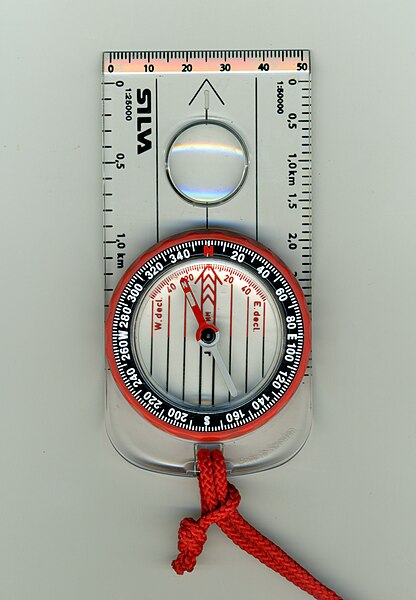A compass rose, sometimes called a wind rose, rose of the winds or compass star, is a figure on a compass, map, nautical chart, or monument used to display the orientation of the cardinal directions and their intermediate points. It is also the term for the graduated markings found on the traditional magnetic compass. Today, a form of compass rose is found on, or featured in, almost all navigation systems, including nautical charts, non-directional beacons (NDB), VHF omnidirectional range (VOR) systems, global-positioning systems (GPS), and similar equipment.
Early 32-wind compass rose, shown as a mere collection of color-coded rhumblines, from a Genoese nautical chart (c. 1325)
First ornate compass rose depicted on a chart, from the Catalan Atlas (1375), with the Pole Star as north mark
A 16-point compass rose on the grounds of a library serves both as a pedagogical device and public art.
A compass is a device that shows the cardinal directions used for navigation and geographic orientation. It commonly consists of a magnetized needle or other element, such as a compass card or compass rose, which can pivot to align itself with magnetic north. Other methods may be used, including gyroscopes, magnetometers, and GPS receivers.
A modern military compass, with included sight device for aligning
Model of a lodestone compass from Han dynasty
A liquid-filled protractor or orienteering compass with lanyard
Cammenga air filled lensatic compass







